Your cart is currently empty!
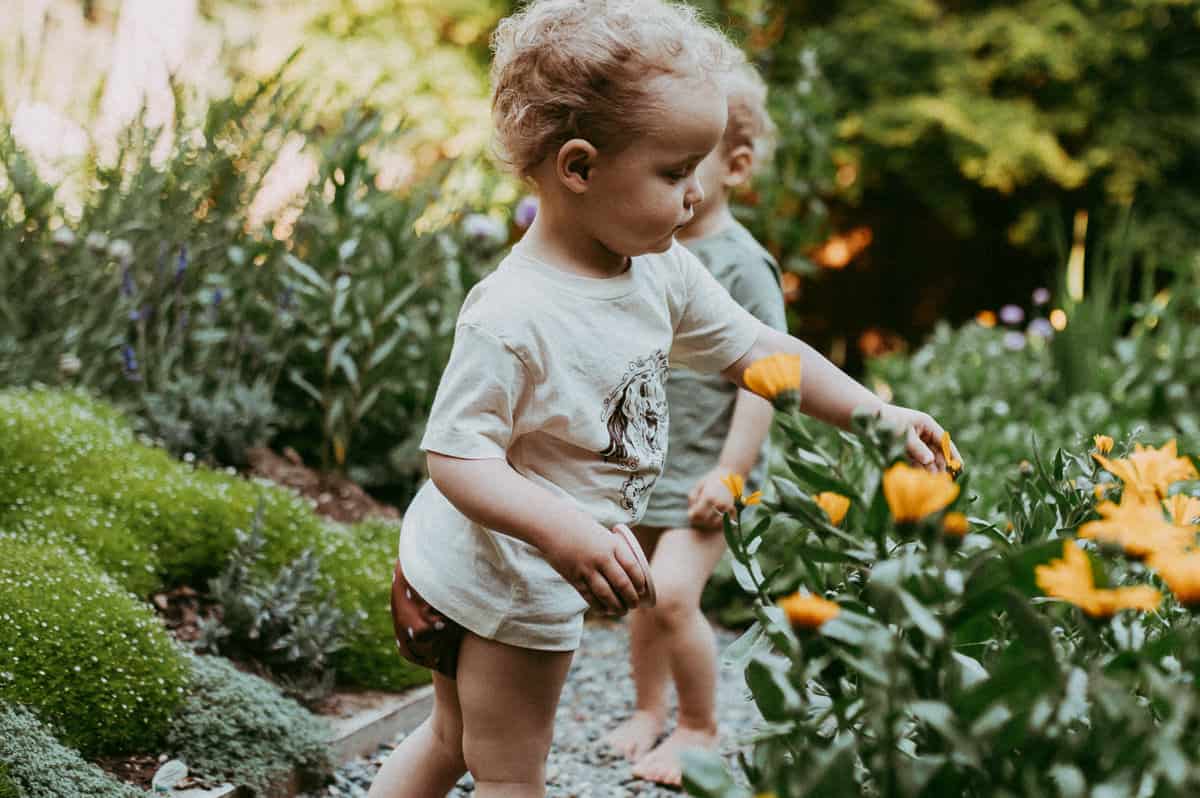
Herbalism with Kids: 5 Ways to Cultivate a Kinship with Plants
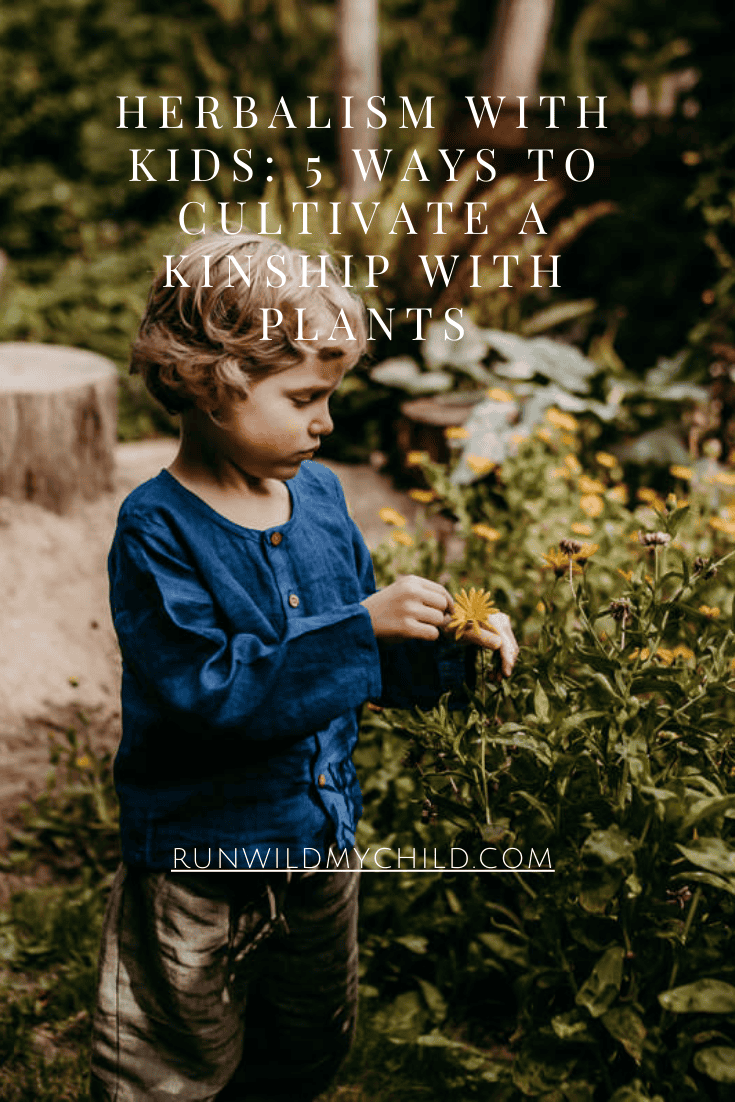
Herbalism with kids
Let’s explore our kinship with the natural world and the influence that plants have on our lives (and ours on theirs!). Exploring the world of herbs with your children opens up a new dimension of learning about nature’s diverse offerings.
A prime parenting goal of mine is raising environmentally aware children who have a sense of responsibility for the piece of Earth they inhabit. I may not always respond ideally to tantrums or hold space for my children the way I hope to, but I am determined that they grow up knowing where their food comes from, as well as the healing power of plants. With so many adults existing in a constant state of disconnect with the natural world, getting outside (and yes, even talking to plants), can shape the landscape of our children’s future adulthood for the better.
Gardening with children is a passion of mine, but this post aims to take that further by introducing the practice of herbalism to young ones. In this post, we’ll explore why introducing children to herbalism is worthwhile and the most engaging ways to do so, from planting a garden and making herbal treats to choosing a power plant, your child’s new BFF in the garden.
The world of herbalism is vast and welcoming, offering countless opportunities for children to learn and grow. In this blog post, we’ll explore how to make herbalism accessible and enjoyable for children, no matter their age group. Incorporating nature-based activities, like growing herbs or making herbal crafts, into your routine can enrich your child’s learning experience.
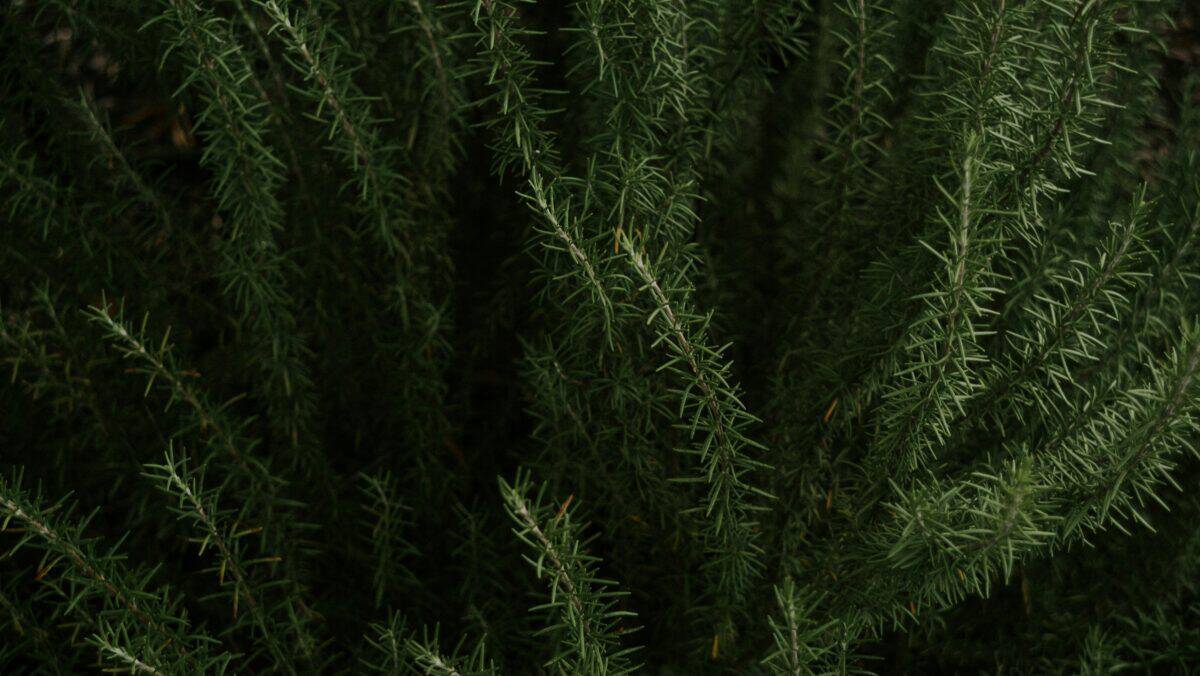
What is herbalism
Herbalism is the study of the medicinal use of plants. Herbalism is an ancient practice of using plants for healing and wellness, rooted in the knowledge that nature provides us with an abundance of remedies to support our health. It’s about more than just brewing teas or making salves and essential oils. Teaching kids about simple herbal remedies, like a soothing chamomile tea, empowers them to understand the healing power of plants. Herbalism is a way of connecting with the natural world, understanding the unique properties of different plants, and learning how they can nourish our bodies and minds.
But, knowing that plants are medicine is only just the beginning. Herbalism requires a relationship between the herbalist and the plant. Children are innately better at this than adults. They won’t hesitate to hug a tree, or whisper a wish to a dandelion.
It may seem like a methodical approach to introducing the practice of herbalism to children is best. However, we could learn a lot by observing children’s intuitive interactions with plants in their environment. As the adults in their lives, our job is simply to spark and keep their internal flame of curiosity burning, facilitate their connection with nature, and keep them safe.
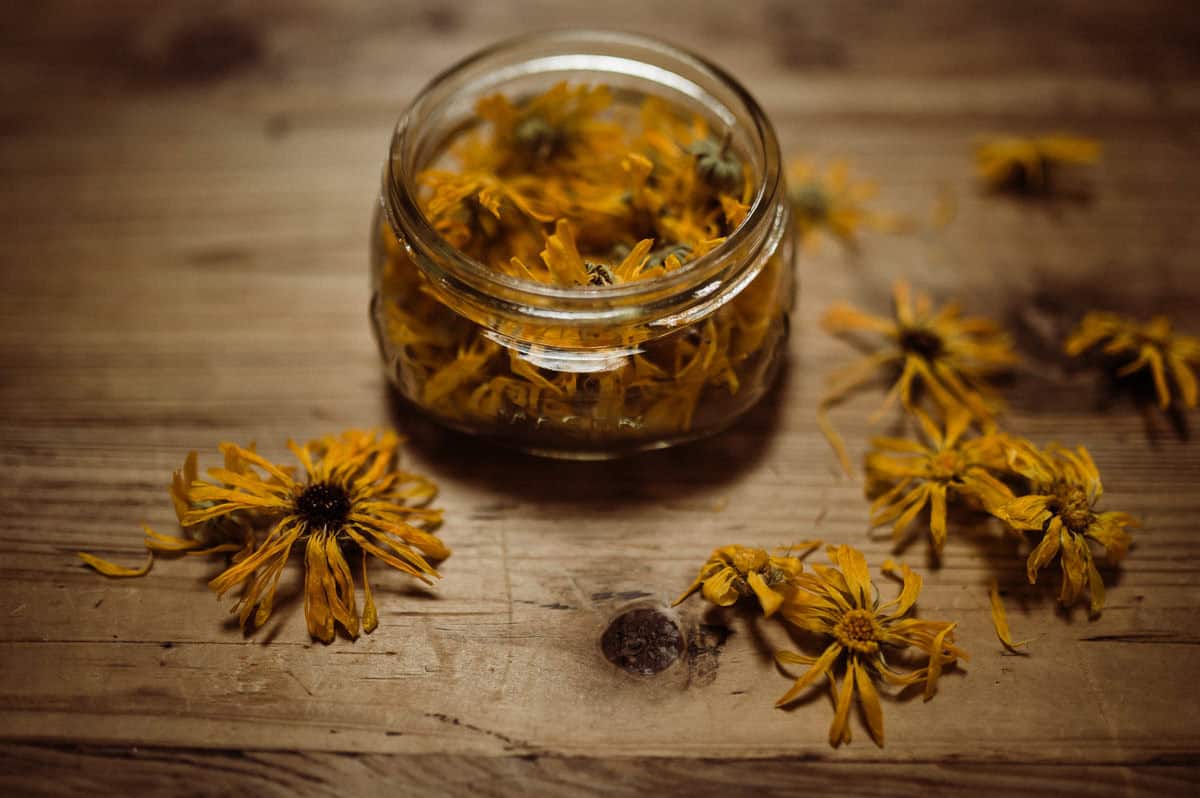
What is an herb?
So, if herbalism is the study of the medicinal use of plants, then, what exactly is an herb?
An herb is a plant or part of a plant that is valued for its medicinal, culinary, or aromatic properties. Simply put, it’s the leafy or green part of the plant (the part that isn’t the root or the bark). These plants, often rich in beneficial compounds, have been used for centuries to flavor our food, heal our bodies, and even enhance our surroundings with their scents.
When we think of herbs, the ingredients you currently have at home in your pantry usually come to mind (e.g. lavender, rosemary, oregano, and parsley). But weeds are herbs, and herbs are most definitely weeds.
What’s the difference between a weed and an herb?
The only thing determining whether something is a weed or not is whether you want it where it’s growing. The difference often lies in perspective and purpose (and not necessarily the plant). A weed is typically defined as any plant that grows where it’s not wanted, often competing with cultivated plants for resources like sunlight, water, and nutrients.
On the other hand, an herb is a plant intentionally grown or harvested for its beneficial properties, whether culinary, medicinal, or aromatic purposes. However, it’s worth noting that many plants commonly labeled as weeds can also be valuable herbs. Many useful herbs are considered weeds by the multitudes.
For example, dandelions are often considered weeds and are mowed away. But they are actually highly nutritious and have been used in herbal medicine for centuries. So, in some cases, the difference between a weed and an herb is simply how we choose to use the plant. Unwanted dandelions are weeds; foraged dandelions are herbs.
When you begin your journey into herbalism, you will start seeing plants differently, with a whole new purpose and lens. New things that spring up in your garden and yard become part of the adventure. You’ll start paying more attention and notice them everywhere! It’s almost like they know you’re ready for them.
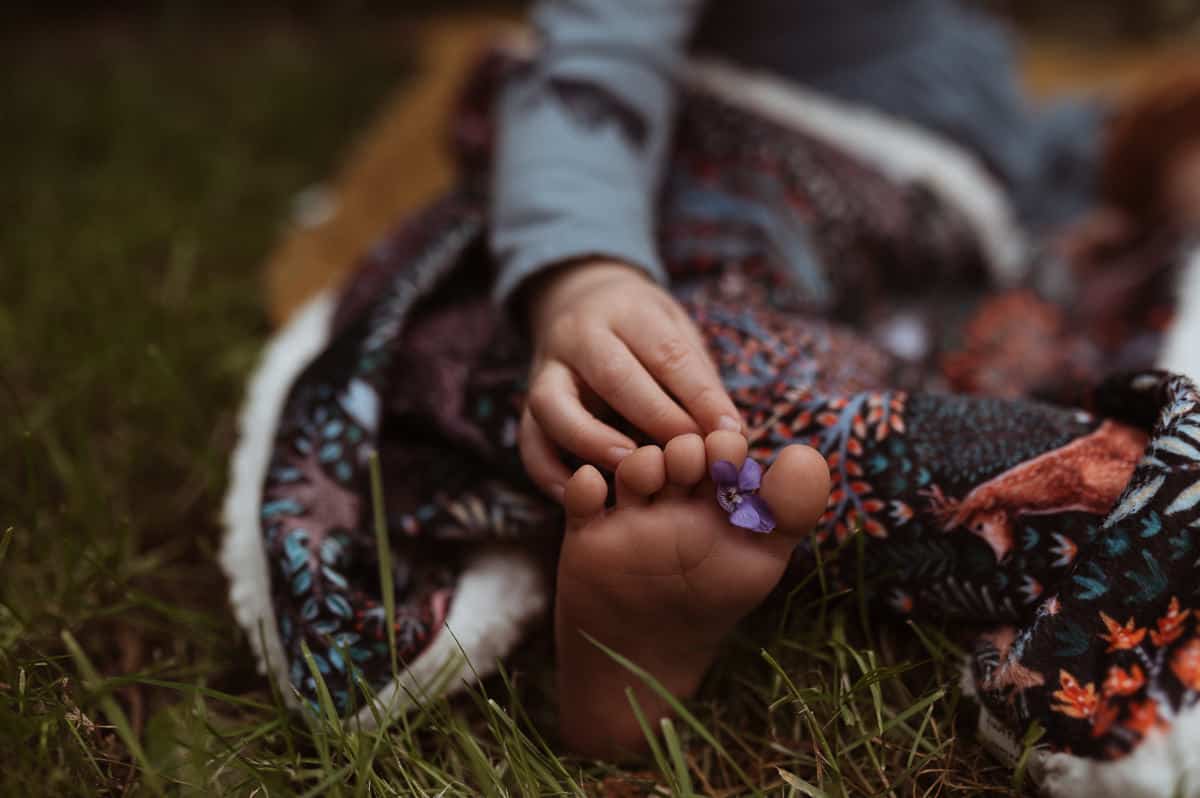
How to introduce kids to herbalism
Studying herbalism and sharing the experience with your children also provides an amazing opportunity to learn collaboratively about native flora, foraging safety, nutrition, holistic health and well-being, biology, botany, chemistry, traditional knowledge, mindfulness, sustainability, and life cycles (among so much else!). And you can’t beat the classroom!
So, how can we introduce herbalism to kids in an engaging way? Read on to find five fun ways that you can get kids involved in herbalism and have fun while learning! These herbal activities are perfect for kids of all ages, offering age-appropriate ways to engage with nature.
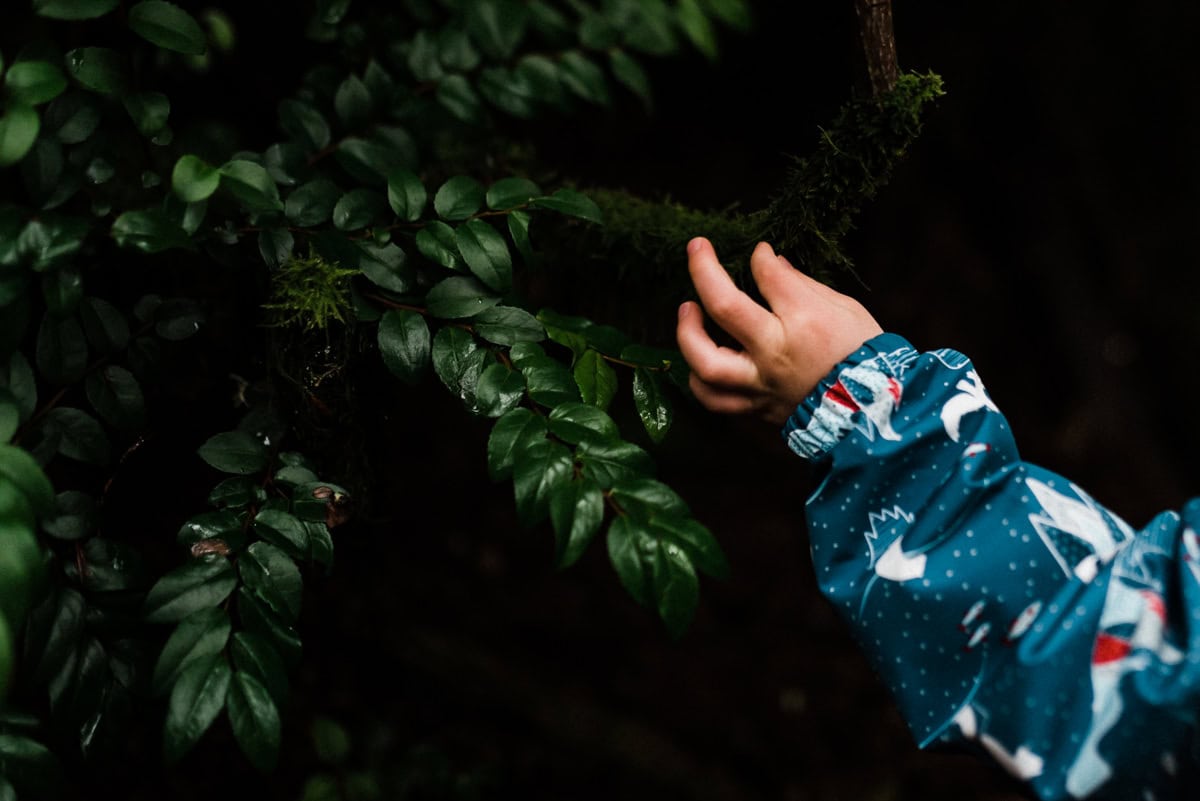
1. Communicating with plant friends
One effective strategy for beginning a study in herbalism is to start with one plant. Have your child choose one herb—this will be your child’s plant ally or friend. Your child will explore this plant in more depth, learning about the plant family and its characteristics, the plant’s anatomy, its life cycle, the characteristics of how the seed is dispersed, the places it likes to grow, and whether it is edible, medicinal, or both. Focusing on individual herbs, like mint or chamomile, allows kids to learn about their specific properties and medicinal uses in a hands-on way.
Your child can choose this plant by looking at what is already growing in their yard or neighborhood, or they may choose a plant that interests them. Help them by giving them a few choices and letting them pick. Giving them a say in the study will help them feel invested.
Get to know your plan’s superpowers
Did you know that each herb has a superpower?
Framing the medicinal properties of plants this way gets instant buy-in from most kids. Working with one plant extensively to start also helps your child cultivate a relationship with that plant.
Mindfulness activities like “sharing their breath with the plant” and listening to what the plant has to offer decrease stress, help the child “tune in” to their surroundings and their own inner voice, and foster a sense of responsibility for the environment. It’s a great way to begin any study.

Mindfulness practices in herbalism
Ask your child to sit with a plant, introduce themselves, and take several deep breaths while visualizing the oxygen coming from the plant on their in-breath and the carbon dioxide returning to the plant on their out-breath. Then, they can take a moment and ask the plant if it has any messages for them. They might ask the plant, “How do you grow?” or “What are you used for?”
They should take a moment and listen silently for an answer, which may present as a picture or words in their head. When they are done, have them thank the plant. Ask your child what information they received. It’s fun for the child to exercise their intuition and deep listening in this way before more formally studying the plant from a scientific perspective.
Some plants change the way we feel pretty quickly! For instance, lemon balm’s (Melissa officials) lemony scent is uplifting, facilitating feelings of happiness and reducing stress. Lavender’s pleasant smell can reduce anxiety and help fight insomnia (it’s a perfect addition to any dream pillow!).
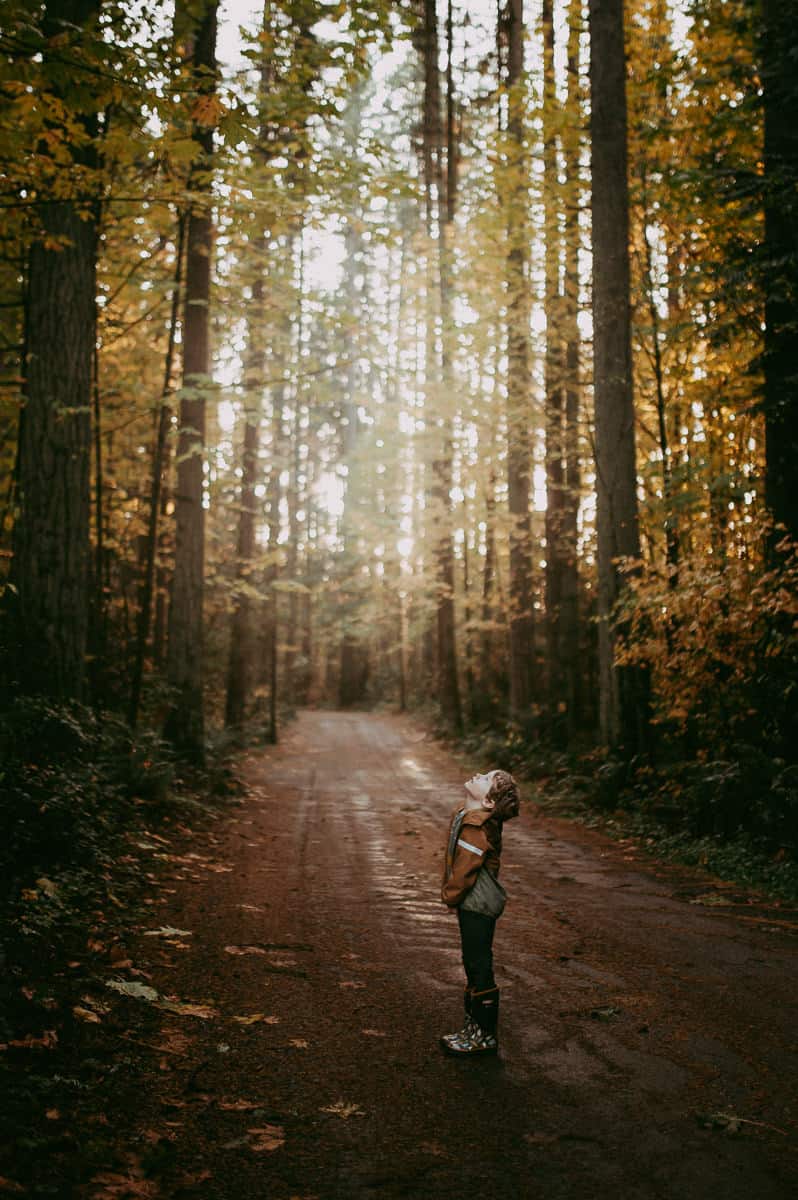
2. Grow your own herbs
A great way to introduce your child to herbalism and encourage them to become more aware of their environment is to have them grow their own potted herb. Or, if you really want to go all in, create an entire herb garden!
This hands-on experience allows children to see the entire life cycle of a plant, from seed to harvest, instilling a sense of responsibility and pride as they care for their own living creation. By giving your child a plant to tend, you’re not only teaching them valuable gardening skills but also fostering patience, curiosity, and a deep appreciation for the natural world. They’ll learn that plants aren’t just something we see outside and herbs aren’t just something you buy at the store—they’re living beings that we can interact with, care for, and even rely on for our well-being.
Get kids involved in the process
Getting kids involved in the process can be as simple as letting them choose which herbs to grow, helping them plant the seeds, and encouraging them to water and observe their herbs regularly. Having your child take an active role in the process, from researching what grows best in your geographic location to selecting herbs based on their unique properties and what your family is most likely to use to planning where each herb will go, is a fantastic hands-on way to experience herbalism from seed to dinner or seed to apothecary. The benefits of this go beyond just learning about herbs; it’s an opportunity to spend quality time together as a family, working towards a common goal.
Plus, having fresh herbs on hand can enhance your family’s meals and provide natural remedies for common ailments. I can’t count the number of times our own herb garden has enriched our family’s meal time, chased away a bad dream, or provided a cup of much-needed solace for a worn-out and overstimulated mom (yep, it’s no secret that that’s me!). Basically, planting an herb garden is great for everyone!
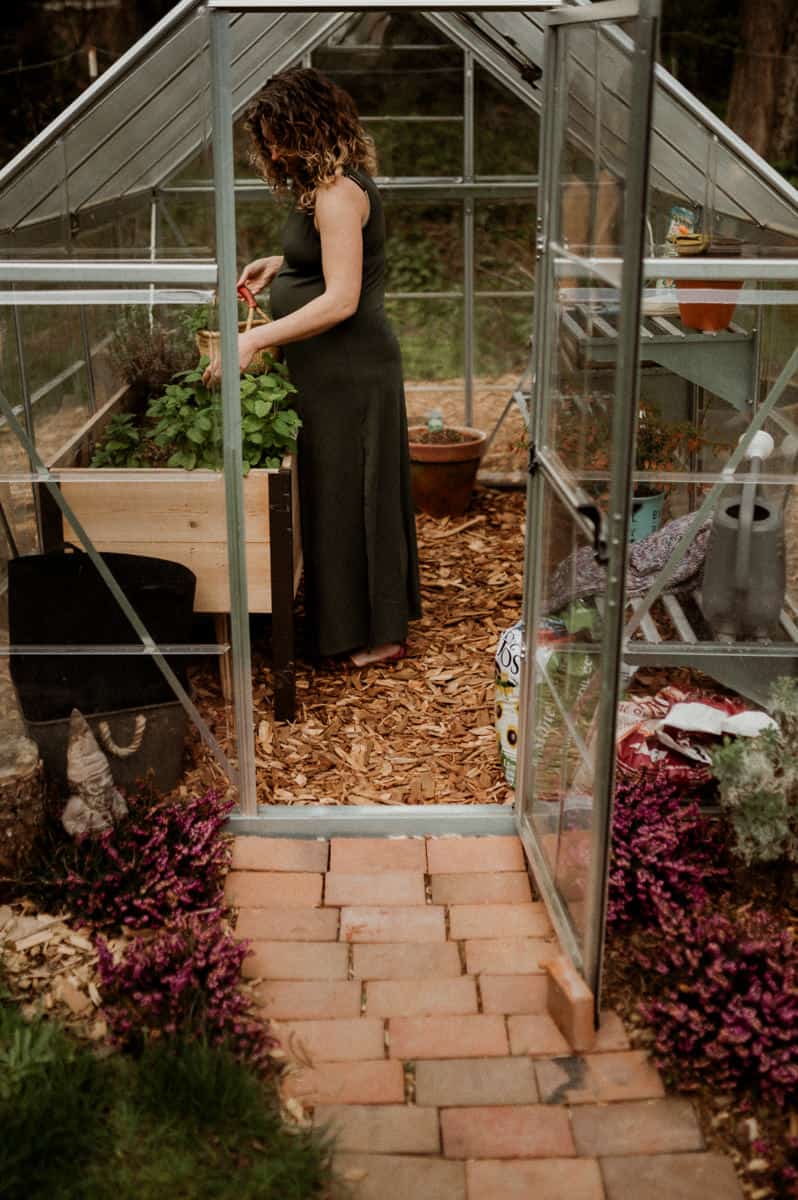
3. Herbalism with kids in the kitchen
Speaking of dinner, cooking with herbs allows your child to experience herbs on a whole other level. When children incorporate herbs into their cooking, they begin to understand the practical applications of these plants in daily life. They see how herbs can transform the flavor of a dish, turning something simple into something extraordinary. This hands-on experience teaches them that herbs are not just plants in the garden; they are powerful ingredients that can promote health and well-being.
If you don’t grow your own herbs, you can still cook with them! Even a simple trip to the grocery store can be an educational opportunity as you explore the individual herbs available and discuss their uses with your kids.
Many of us become nostalgic when encountering a specific smell or taste. Maybe our grandmother was known for savory meals that were seasoned with a particular herb. The mere smell or taste can take us back to our childhood and her kitchen. Involving children in food preparation is a way to forge beautiful memories with our smallest family members. Moreover, small children thrive from sensory experiences. The smells, tastes, textures, and sounds all create a holistic learning experience and new neurological pathways.
Ways to incorporate more herbs into your food
There are so many fun and creative ways to incorporate more herbs into your food and meals. Creating custom tea blends with your kids is a delightful way to explore the flavors and benefits of different herbs. Making elderberry syrup together is a fantastic way to teach kids about herbal immunity boosters in a fun, hands-on way. Licorice root is a sweet herb that kids might enjoy using in homemade teas or as a natural sweetener in other herbal remedies.
Here are a few more ideas:
- Herb-infused butter: Let kids create their own flavored butters by mixing soft butter with chopped herbs like chives, parsley, or basil. They can spread it on bread, corn, or use it to top off baked potatoes.
- Herb ice cubes: Make ice cubes with a twist by adding fresh herbs like mint, rosemary, or thyme to water before freezing. These cubes can be added to drinks or soups for a burst of flavor.
- DIY herb pizza: Have kids sprinkle fresh herbs like basil, oregano, or thyme on homemade pizzas before baking. They can experiment with different combinations to create their own signature flavors.
- Herbal smoothies: Blend herbs like mint or basil into fruit smoothies for a refreshing twist. Kids can try different herbs to see how they change the flavor of their favorite smoothie.
- Herb-infused olive oil: Help kids make their own herb-infused olive oil by placing sprigs of rosemary, thyme, or garlic in a bottle of olive oil. They can use the flavored oil for dipping bread or drizzling on salads.
- Herbal popcorn seasoning: Let kids create a custom popcorn seasoning by mixing dried herbs like oregano, dill, or parsley with a little sea salt. It’s a fun way to add some extra flavor to movie night!
- Herb-infused honey: Infuse honey with herbs like lavender or thyme to make a sweet herbal treat. Kids can drizzle the infused honey on toast or yogurt or use it to sweeten tea.
- Herb garden salad: Encourage kids to add fresh herbs like cilantro, dill, or chives to their salads for an extra burst of flavor. They can even create their own salad dressing using these herbs for a more personalized touch.
Herbs are a window into different cultures and traditions
Many cultures are recognized for specific dishes and flavors (usually from herbs). Cooking with children is a way to stay in cultural traditions, connect with family members, and educate the palate! Each herb carries its own history and significance, often rooted in the culinary practices of various cultures around the world. By using herbs from different cuisines—like basil in Italian dishes, cilantro in Mexican recipes, or turmeric in Indian cooking—kids can gain an appreciation for the diversity of global food traditions.
This exploration not only broadens their palate but also deepens their understanding of how different cultures have harnessed the power of herbs for flavor, nutrition, and healing across generations. So ask a grandparent for their favorite recipe and pay close attention to what herbs and spices are used in the dish. Then, have a hand at making it with your kids.
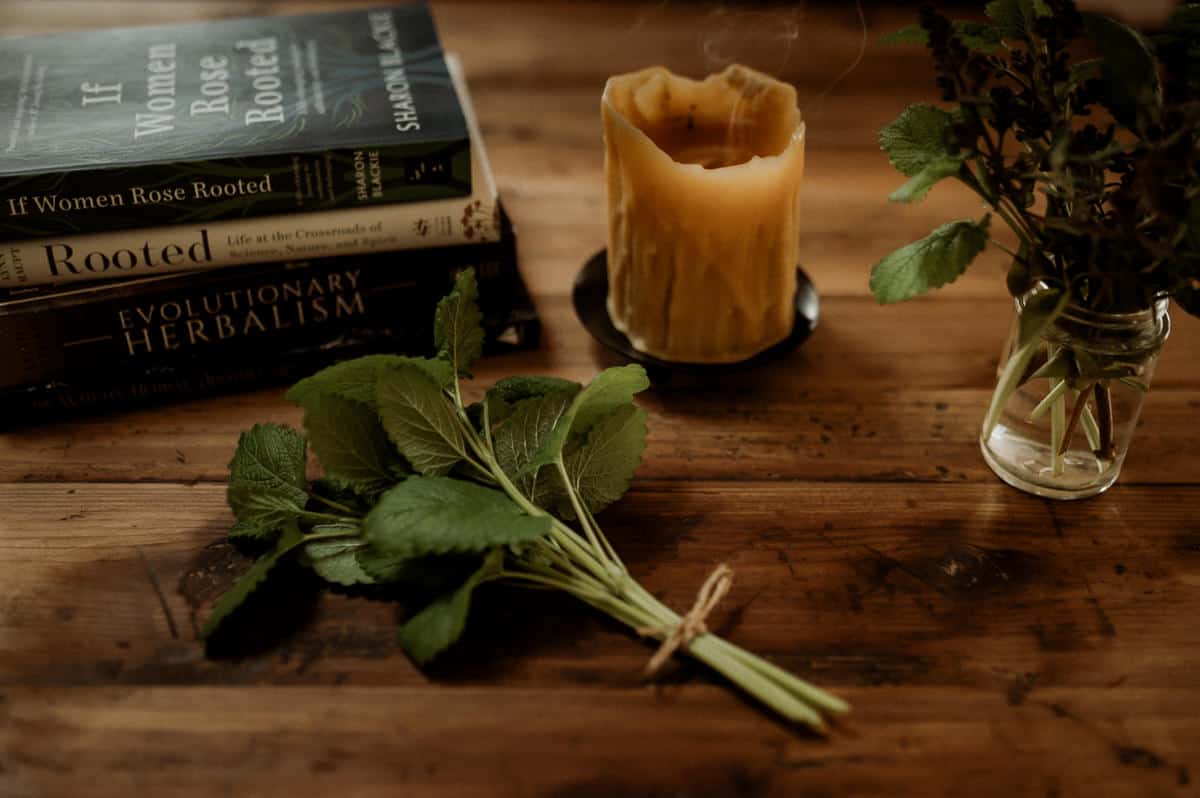
4. Start with magic potions
As children, my sister and I would spend hours crushing flower petals, mashing plants, and adding various liquids to create perfumes and potions. We stirred up mixtures of dandelion petals, grass clippings, and water, imagining that we were creating something magical. These childhood “potions” were more than just a way to pass the time—they were an early form of exploration, a way for us to interact with the natural world and let our imaginations run wild. This simple, unstructured play was our first taste of herbalism, even if we didn’t realize it at the time.
Children love creating! And our friends (the plants) make beautiful creations. Encouraging kids to make their own garden potions can be a fun, creative activity that also serves as an introduction to the world of herbs. By gathering ingredients from the garden, they can start to recognize different plants and learn about their properties in a playful, hands-on way.
You can guide them to use real herbs in their potions—like lavender for its calming scent, mint for its refreshing flavor, or rosemary for its invigorating aroma. This kind of play not only sparks their creativity but also lays the groundwork for understanding how herbs can be used for more than just pretend magic.
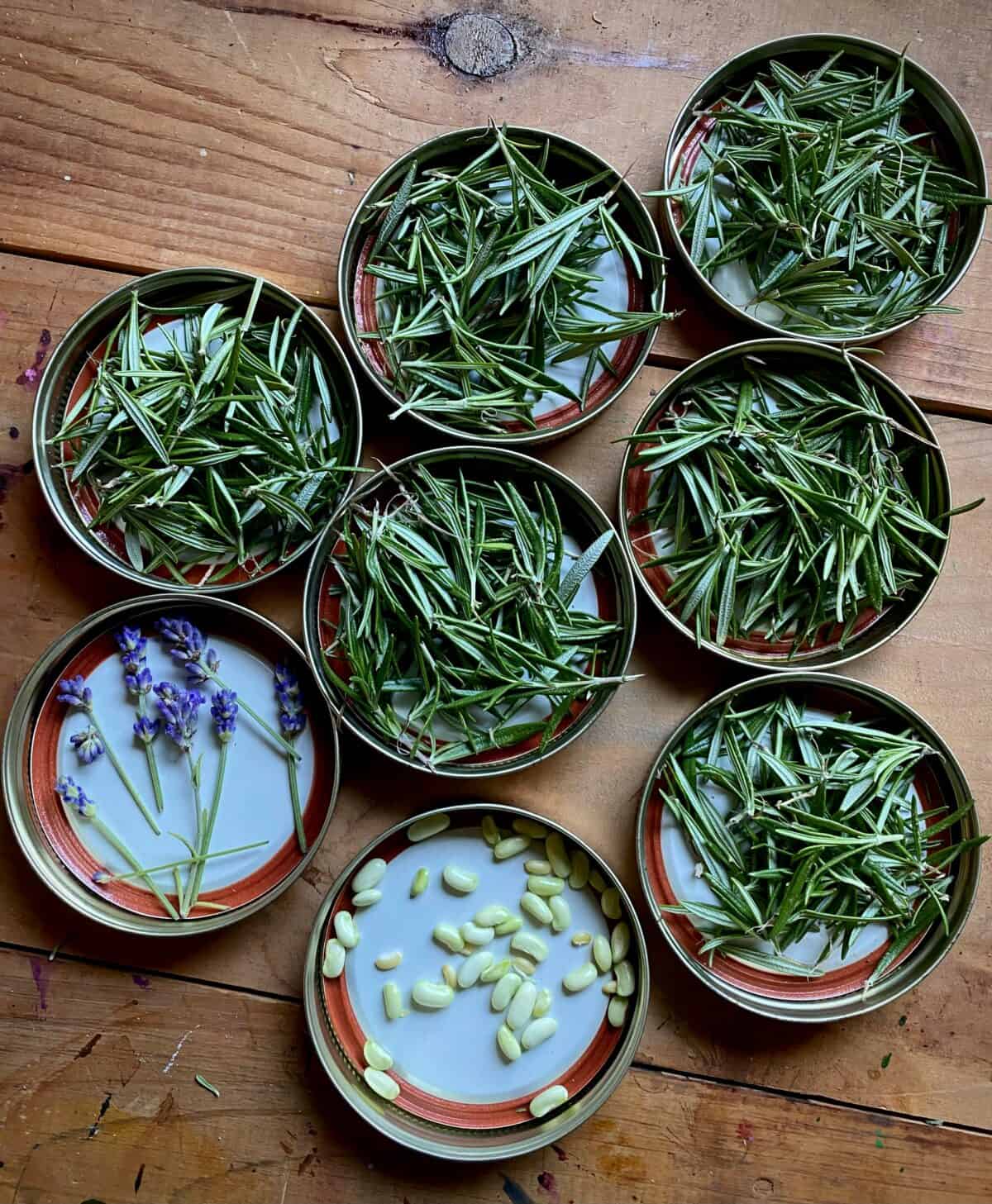
Turning herbs into medicine
Taking this a step further, herbs can actually be transformed into simple, real-life medicines, and kids can be a part of this process, too. Introducing medicinal herbs to your children helps them appreciate the natural alternatives for supporting their health. By learning about healing plants, children can discover how nature has been a source of medicine for centuries.
For example, you can show them how to make a soothing herbal tea with chamomile, or how to create a lavender-infused oil to help with sleep. They can help clean, sort, and prepare plant parts for teas, herbal infusions like this mineral rich nettle infusion, infused oils like this one that’s great for delicate skin, salves, glycerites, herbal sodas, treats like this yummy marshmallow recipe, herbal sachets like this dream pillow, herbal playdough, and other crafts and gifts.
Making these simple remedies together allows kids to see the tangible benefits of herbs and gives them a sense of accomplishment as they create something useful. Herbs are magic and they have so much to offer!
Even the youngest child can get involved in the process. Children can gather herbs (with supervision!). They may even be inspired to draw a picture of the herbs they encounter and collect. Older children can learn to identify herbs and include information about the medicinal properties of the herbs they are drawing. This is the beginning of their very own materia medical!
By involving them in the process—from harvesting the herbs to preparing the final product—they learn about the healing power of plants in a way that is both educational and deeply satisfying. This not only teaches them valuable skills but also instills a sense of empowerment and connection to the natural world that can last a lifetime.
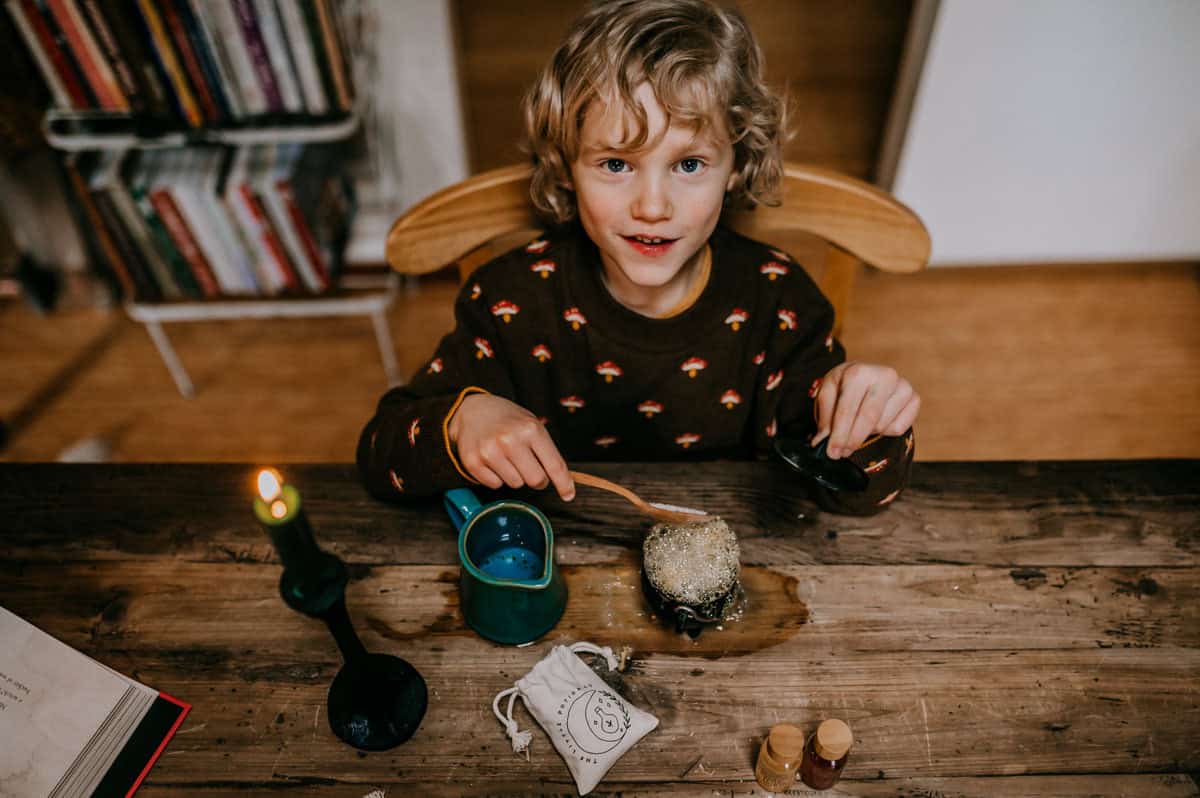
5. Herbal folklore, storytelling, & games
Herbal lore is the body of knowledge passed down through the generations comprised of stories or folklore, cultural traditions, and historical practices involving insights into the healing powers of plants. This is a beautiful way to connect our kids to the wisdom of generations past, enriching their understanding of both plants and the cultures that have cherished them.
As humans, we’re naturally drawn to stories, and herbal lore offers a treasure trove of tales that blend the magical with the medicinal, making the learning process both engaging and memorable. By sharing these stories, we help our children see plants not just as greenery in the garden, but as living entities with histories, personalities, and powers that have been respected and utilized for centuries. Sharing bits of lore about different herbs adds an element of magic and storytelling, making the learning process more engaging and memorable for kids.
Storytelling where herbs become characters
Teaching kids about herbal lore can be as simple as telling them a bedtime story about how ancient healers used yarrow to treat wounds on the battlefield or how rosemary was believed to bring good luck and protection. These stories give context to the plants they see every day, turning ordinary herbs into characters. As we weave these tales, we can also introduce cultural practices, such as how different communities celebrate harvest festivals or use herbs in traditional remedies, deepening their appreciation for diverse cultures and their connection to nature. It’s also a more effective way for children to learn. One of my favorite herbal books for kids includes a story for each of the plant profiles in the book. It’s a lovely way to dig deeper into herbalism.
By sharing these stories, we’re preserving valuable cultural knowledge and instilling in our children a sense of responsibility to carry these traditions forward. They learn that herbalism is not just about using plants for healing; it’s about honoring the knowledge that has been carefully passed down through generations and understanding their role in continuing that legacy.
Herbal fun and games
The plant world is full of wonders, and herbalism offers a fun gateway for kids to explore its richness and diversity. Games also make the learning process fun! This herbal game similar to candy land is cooperative and teaches children 25 important edible and medicinal plants and their uses in first aid situations.
If you want to make up your own game to help kids learn about herbs, here are a few ideas:
- Herb Scavenger Hunt: Create a list of common herbs found in your garden or local area and send kids on a scavenger hunt to find them. To make the game more educational, you can include clues or descriptions of the herbs’ properties. For example, “Find the herb that smells like lemons and is known for its calming properties” (lemon balm). This game helps children learn to identify herbs by sight, smell, and even touch.
- Herbal Bingo: Make bingo cards featuring different herbs and their uses. As you explore the garden or a nature walk, kids can mark off herbs they spot. You can also include activities on the bingo card, such as “Make a herbal tea” or “Smell an herb with a minty scent.” This game encourages kids to observe and interact with herbs in a fun way.
- Herb Matching Game: Create a set of cards with pictures of herbs on one side and their names or uses on the other. Kids can play a matching game where they pair the picture with the correct name or use. This helps with memory and reinforces their knowledge of different herbs.
For additional inspiration and online resources, check out the Herbal Roots Zine. It’s a colorful compendium of crafts, poems, art, and stories that can further enrich your child’s herbal journey.
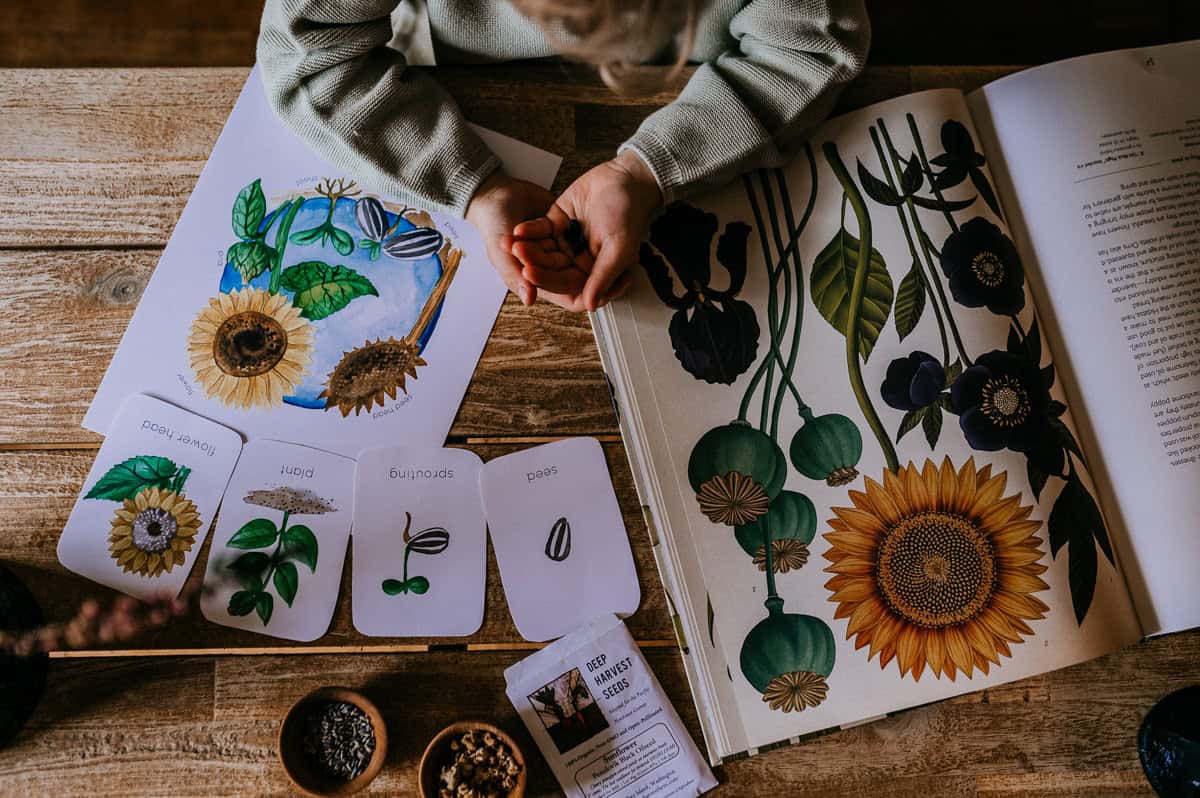
Safety when practicing herbalism with kids
When practicing herbalism with kids, safety is extremely important. It’s imperative that we teach children that not all plants are safe to touch, taste, or use. Yes, plants are wonderful and have many healing powers, so it can be easy to forget that there are toxic ones, too. Couple that with the fact that some safe plants can have noxious look-alikes (e.g., cow parsnip and poison hemlock), and accidents with devastating results can occur. Some plants can be toxic or cause allergic reactions.
Proper identification of herbs
Learning to identify and use wild plants safely can be a thrilling adventure for children, helping them connect with the natural world around them. It’s vital to exercise an abundance of caution when working with both new and familiar plants. Proper plant identification is crucial. This doesn’t mean depending on a phone app, either. Experienced adults and reliable references are your best bet when identifying plants in your environment. Always supervise young children during foraging or gardening activities, and emphasize the importance of asking an adult before picking or using any plant.
Proper handling, preparation and consumption of herbs
Additionally, when introducing herbs for consumption or topical use, start with small amounts to monitor for any adverse reactions, particularly if your child has known allergies or sensitivities.
Most of us know to avoid plants like poison ivy, but even “safe” plants can cause side effects if used in the wrong quantity, by the wrong person, or not properly prepared. For instance, certain herbs can interact negatively with medications, either increasing or decreasing the medication’s potency.
Also, useful herbs like stinging nettle, can cause painful skin reactions when the wildcrafter is not wearing protective clothes or gloves. Likewise, the small hairs that contain formic acid (the same chemical in ant saliva!) can cause burns and painful rashes if it isn’t dried thoroughly or simmered/boiled for a long time before consuming. After inadvertently rubbing up against nettle, it’s helpful to know what dock looks like. The sap in the dock leaf contains an antihistamine that soothes nettle stings. And it’s usually conveniently growing nearby!
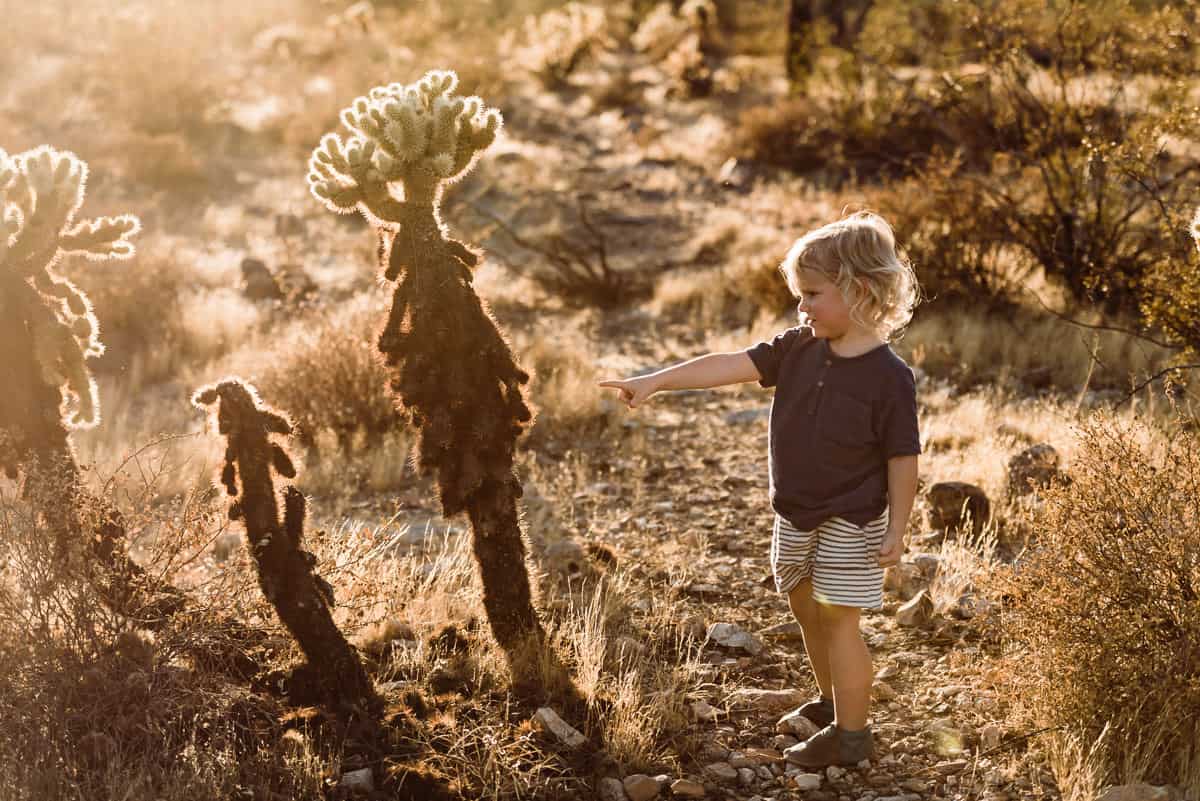
Sustainability and herbalism
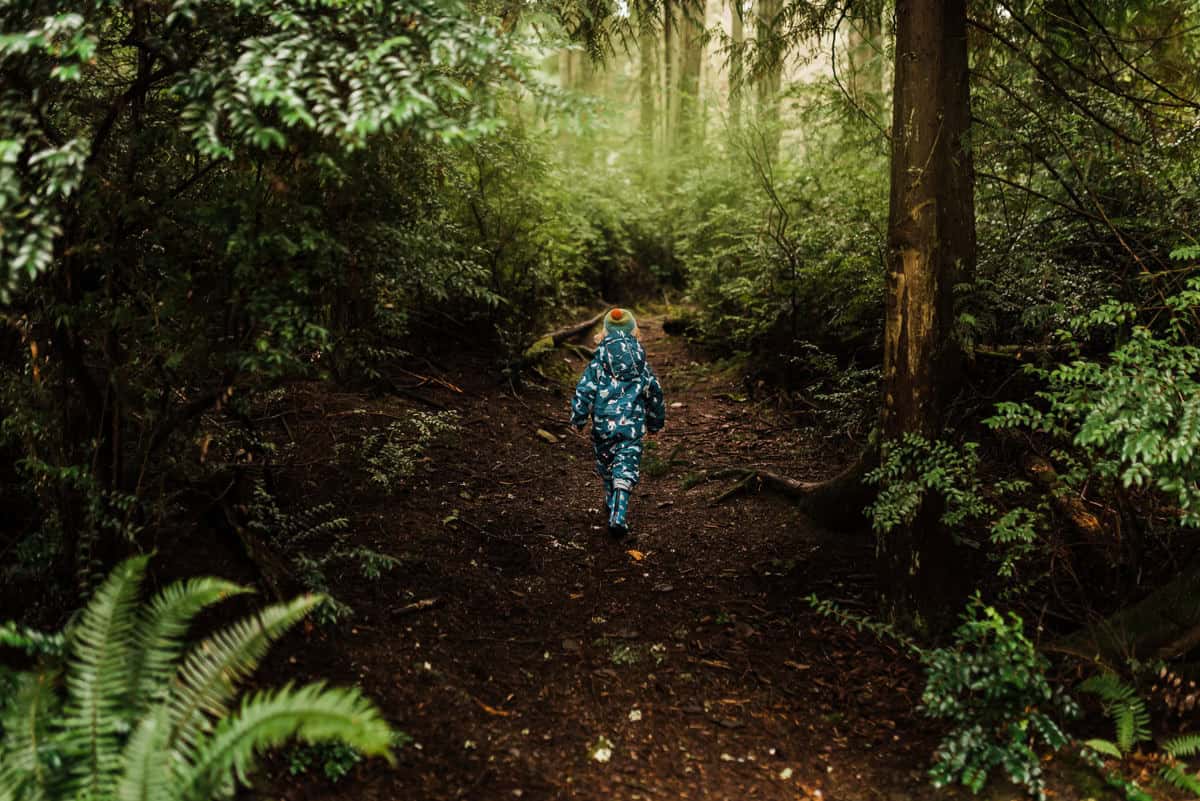
Herbalism and kids
Introducing children to herbalism is not just about learning about plants, it fosters a deeper connection to nature, promotes holistic wellness, and cultivates responsible children who care about sustainability. Through simple activities like growing a potted herb, making garden potions, or cooking with fresh herbs, we’re creating memories and lessons that will stay with them forever. Whether you’re working with toddlers or teenagers, these herbalism activities are designed for children of all ages to enjoy and learn.
Herbalism offers a powerful way to enrich our families’ lives, not only by harnessing the healing powers of plants but also by nurturing a deeper understanding of our place in the natural world. There’s no better way to introduce your children to herbalism than by involving them in the process of growing, harvesting, and using herbs in everyday life. By engaging in herbal study and activities, children grow to be the environmental stewards that our planet needs. And by practicing herbalism safely and sustainably, we’re ensuring that this knowledge will continue to grow and flourish, just like the herbs in our gardens, for many generations to come.
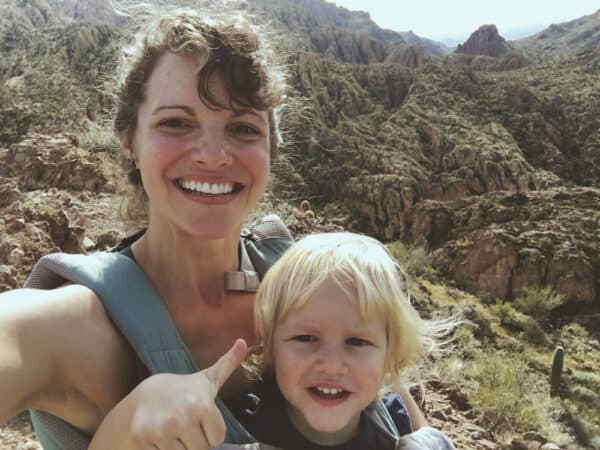
About the author
Jackie grew up in central Pennsylvania but is currently enjoying island life in the Salish Sea with her two teens, a pre-schooler, and identical twin baby girls. She specializes in soul-centered outdoor elopements on wild pieces of Earth, as well as soulful, nostalgic, and cozy storytelling photography for families wishing to reconnect with the Earth and with each other.
Jackie is a former forest preschool teacher with a Ph.D. in developmental psychology who whole-heartedly believes that Reginald Horace Blythe was right when uttering the words “Mud is the most poetical thing in the world,” and loves to spend her time in the thick of nature, usually with bare feet. Her greenhouse is her happy place. She also believes that children are big philosophers in little bodies and that we would all be better off walking through life as they do, with our eyes, ears, and hearts open to it all. To that end, she wishes to share photography as a means to live more fully and intentionally in each moment and in nature. Mostly, she just wants her children to grow up with a sense of wonder, to wander, and to have a strong passion for protecting this planet.
You can find more from Jackie in the following locations:
Instagram: @raising_little_naturalists
Websites: Wild Kin Wandering and Earthwise Mothering
RWMC posts: Jackleen Leed
Comments
One response to “Herbalism with Kids: 5 Ways to Cultivate a Kinship with Plants”
Thanks a lot for this amazing content! It’s really helpful. Wishing you a peaceful and successful day!

Leave a Reply